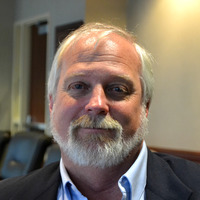Why Does EOS/Traction Work So Well for Family Businesses?

Imagine this not so uncommon family business situation. In a fourth-generation family business, the transition between the previous generations always went from the father to son in the business: twice to the oldest son and once to the only son. But now three family members are interested in working in the business. All have some leadership abilities and their dad would like to give each of them a chance to own the business.
Dad has a few tricky questions about what to do next:
- Who should run the business day-to-day?
- When will they be ready?
- Would it be easier to have the three of them share leadership?
- What is fair?
Undoubtedly, you have seen situations like this this before, perhaps in your own family business.
This family business decided to implement the Entrepreneurial Operating System to help them answer those questions.
What is EOS?
Over the past eight years I have seen an increasing number of family businesses use the Entrepreneurial Operating System (also known as EOS or Traction) to help them make decisions just like this.
EOS was created by Gino Wickman, a man who began his own entrepreneurial career in his 20s while working shoulder to shoulder with his dad in their family business.
The entire system is based on the simple belief that when any privately held company with between 10 and 250 employees gets strong in six key areas, they get traction in their business; the nagging issues fall into line; and they can really move the business forward.
It is a set of simple tools that help companies get strong in these areas:
- Vision - Everyone on the leadership team, and ultimately everyone in the business, agrees on and understands the vision for the company.
- People - The leadership team gets clear about who the right people are for the business and what the right seats are.
- Data - The leadership team and ultimately the rest of the team look at just a handful of numbers on a weekly basis that help them predict whether the business is on track for the vision.
- Issues - Everyone in the business has a place to express and solve their issues for the long run.
- Process - The business gets organized in a way that all of the key processes are documented and everyone follows them.
- Traction - Everyone on the team participates in world-class meetings and has clear priorities each quarter.
While it is a system built on simple tools, it is not easy to use. It asks family business members to make hard decisions. It asks them to have open and honest conversations. It requires a commitment to the future of the business and not their own agendas.
How They Solved the Problem
One their first day of implementing the system, the family described above created their Accountability ChartTM.
An Accountability ChartTM is an org chart with muscles. It clarifies the key functions of the business, each person’s role, who is whose boss and who is on whose team. To create an Accountability ChartTM follow these steps:
- Get your leadership team together in a room.
- Fire yourselves from working IN the business and commit to working ON the business, as if you are a board of directors or group of owners.
- Think forward 6-12 months.
- Commit to making the Accountability ChartTM without specific people in mind, but instead build it for the needs of the business.
- Discuss and debate what you think the key functions of the business are (start with three – sales and marketing, operations and finance).
- Draw those in boxes on a white board.
- Decide what the leader of each function should be accountable for (this is usually 3-7 bullet points) and put those bullet points next to the boxes.
- Draw a box above them and label it “integrator” – This is a required seat in any business. The integrator’s role is to keep the business from working as a bunch of silos, to break ties, to break down barriers, to be accountable for the profit or loss of the business, and often to take on special projects.
- Draw a box above that one and label it “visionary.” You may or may not need a visionary in your business. If you do, that role is often accountable for the culture of the business, big relationships, new ideas, and R&D or innovation.
- That is the structure at the top of your business. Now ask yourselves who is uniquely skilled to get each job, who wants the job, and who has the capacity to do the jobs described on the Accountability Chart.TM
- Put their names on the chart
- Then let the leaders of each function of the business create the seats that report to them with the same process.
- That is your Accountability Chart.TM
When the family I described created their Accountability ChartTM they realized that none of their three kids had the skills or capacity to run the business. One of them was a strong marketing leader; the other was a strong finance leader; the third was a great individual contributor. They hired a non-family member to run the day-to-day of the business. Mom and Dad got to retire. Now they run a successful, professional family business that hasn’t lost its family business feel.
Hiring a non-family member was an extremely hard decision. It was even harder not to include all three siblings on the leadership team. There were tears and sadness -- but also clarity. They all knew that having the right people in the right seats would ultimately help the business thrive, which would help the family thrive.
Now, almost three years into using the system, all three next-generation family members enjoy their jobs, are paid fairly for the work they do, get along and are focused on the future of the business.
Mom and Dad have retired, and they are all able to spend time together as a family.
They are not without conflict. The good news, however, is that any conflict is productive and focused on the big picture and future, not the past.
How to Focus on the Future
A second tool, the Vision/Traction Organizer, was powerful for this family and the tens of thousands of companies who use this system.
Filling out this tool is simplified strategic planning. You answer the following powerful questions:
- What are our core values? These are specific values that describe the kind of culture you want in your business.
- What is our core focus? It is made up of your purpose, cause or passion, and your niche.
- What is our 10-year target?
- What is our marketing strategy? Determine who your ideal customer or clients are to get to your 10-year target.
- What is our 3-year picture? This includes top line revenue, profit and up to 15 things you will have accomplished in the business.
- What is our 1-year plan? This includes top line revenue, profit and seven or fewer specific goals to accomplish.
- What are our 90-day rocks? These are the seven or fewer most important things that need to get done in the next 90 days.
- What are our issues? This is a list of issues you need to solve in order to accomplish what is on the rest of the list.
When the family got clear on the answers to those important questions, they all understood where the business was headed. Now their conflict is focused on how to accomplish that vision. Their idea of success is defined, and they work toward it together.
Other Success Stories
This is not the only success story I have seen. For the past six years I have seen scenarios like this with family businesses who are bringing in their second, third and fourth generation family members. I have seen it work effectively in dozens of industries. The smallest team I got to work with had nine employees, the largest had nearly 400.
I have worked with a family business that had four family members on the leadership team on their first day of using the system, and within a handful of months only had one family member on the leadership team.
I have worked with a family business that had four members of the next generation working in the business. They started the process assuming the oldest son should be the leader. After following the EOS process, they realized that the youngest daughter should run the day-to-day of the business.
I have seen tears and laughter. I have seen fear and joy in people’s faces.
I have seen a stepmom and stepson run a nearly 100-year-old business and nearly double its size.
I have seen husbands and wives get divorced while running the family business and not lose sight of the business during the process.
Those are just a few of the success stories.
EOS Isn’t for Everyone
The Entrepreneurial Operating System isn’t for every family business. It only works for companies that are interested in growing; that want or need change; that are willing to be open, honest and vulnerable; and that are frustrated or concerned enough about their business to want to put in the time to implement the system.
It is made for entrepreneurial leadership teams that want to see growth, that are tired of hitting their heads against a ceiling, that want to have the right people on their team and want to be their best.
Since it was created by a man who was working shoulder-to-shoulder with his own father, and since it creates clarity and team health, it is the ideal tool for family businesses.
How to Implement the Process
You can implement EOS yourself by purchasing the book “Traction” by Gino Wickman. Many family businesses have successfully self-implemented the tools. Many have also struggled to have the hard conversations required to fully get the benefits. Those companies have hired an implementer to get them through the hardest parts, such as creating the Accountability ChartTM and rolling out the tools to the rest of their team. Typically, after two years, family businesses can run the system on their own and don’t need an implementer. There are nearly 500 implementers around the world today and over 10,000 companies who have hired one. There are tens of thousands more who use the tools.
Learn more
You can find more information about EOS at www.eosworldwide.com
Read the book "Traction" by Gino Wickman.
Or reach out to the author to learn more.
Sara B. Stern is the former director of the Family Business Center at the University of St. Thomas. During her time there she developed the Family Business Breakfast Series and the Ownership Academy. She is also a Certified EOS Implementer.
She works exclusively with a limited number of family business leaders who want to maximize the impact they have on their companies, families and communities.
She is the author of "Start Here: A Guide for Family Business Succession."




